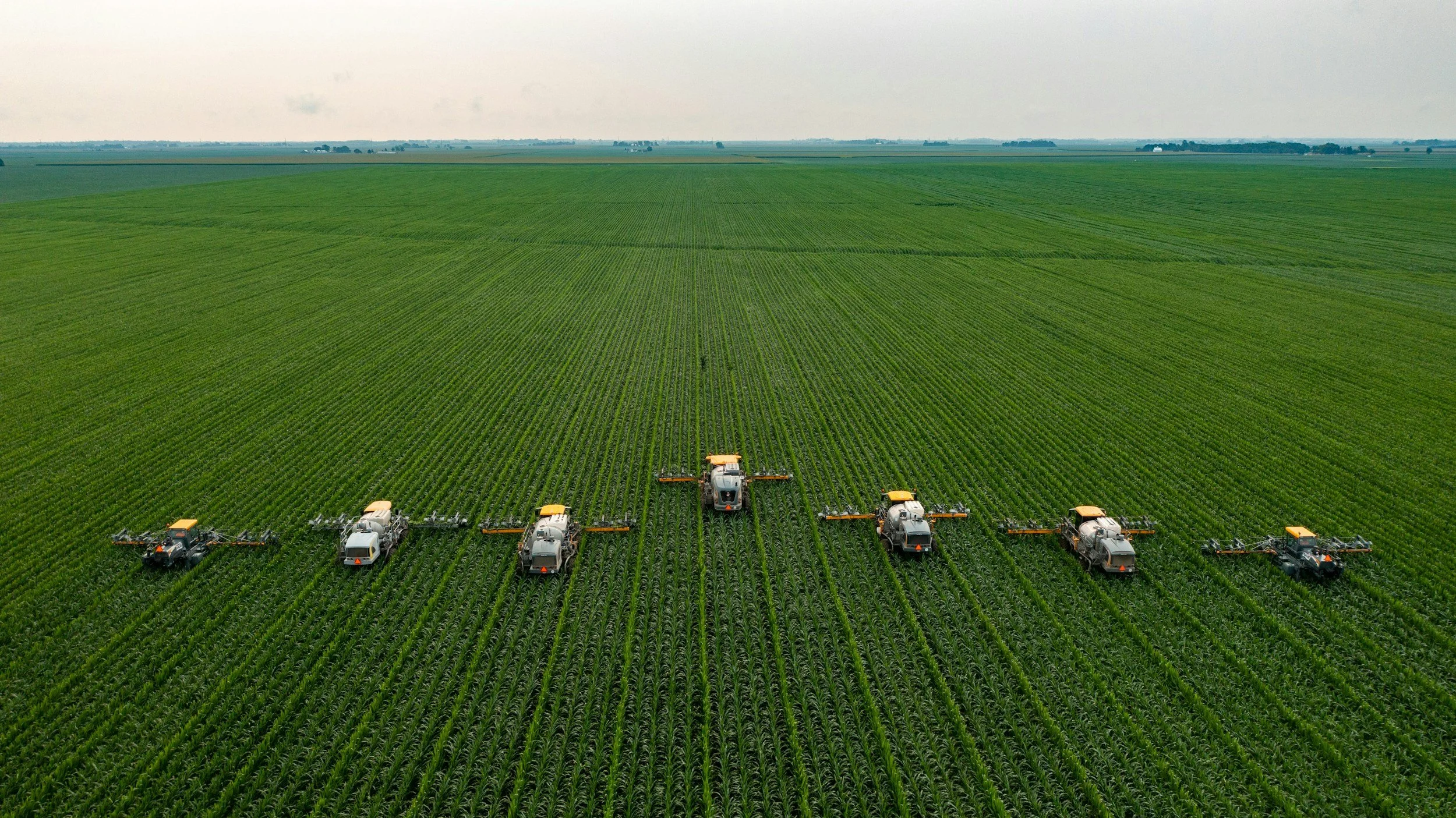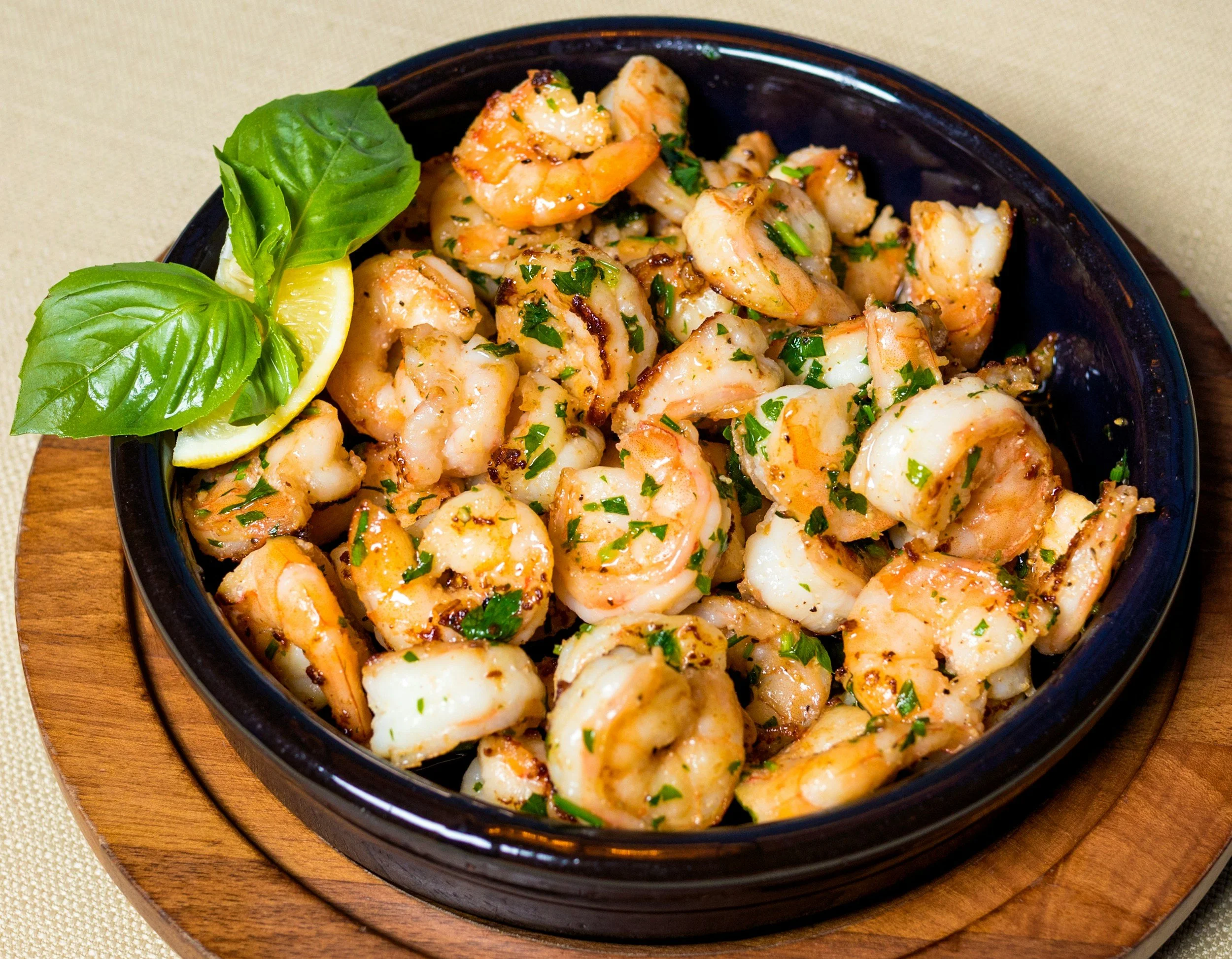Want More Tomatoes from Your Plants? 10 Ways to Increase the Harvest
/Tomatoes are one of the most popular things to grow in a vegetable garden. They can be relatively easy to grow, even for beginners. With over 10,000 varieties of tomatoes available around the world, it isn't too hard to find cultivars that will grow well in your garden.
While it's tempting to simply bring home a seedling from your local garden nursery, transplant it into a larger pot, and water as needed, there are several strategies you can use to ensure a harvest from your plants that is healthy, abundant, and continuous throughout the growing season. This article discusses 10 ways you can increase the harvest from your tomato plants, whether you're growing in containers, in raised beds, or in the ground.
1. Prep for Success: light and soil
Ensuring an abundant from your tomatoes depends in large part on how you prepare your planting location and medium. This is true of most successful harvests. Tomatoes need at least 6-8 hours of direct sunlight each day, so make sure that the spot you have chosen is adequate for this purpose. WIth less direct sunlight, your plants will struggle, and struggling plants emit chemical signals that attract herbivore pests.
In addition to ensuring that your tomatoes will get adequate sunlight, make sure you are working with well-draining soil to prevent waterlogging, which can lead to root rot. The best way to do this, especially if you are planting tomatoes in containers or raised beds is to amend the soil wil organic matter such as compost, worm castings or aged manure, as well as material that will enable the soil to drain adequately. Adding perlite to the soil works well for drainage, but you can also add crushed eggshells for this purpose.
2. Select Varieties with High Yields
When choosing which varieties of tomatoes to grow in your garden, select high-yielding varieties that will produce a bountiful harvest. Some tomato cultivars are known for their prolific fruit production, while others may not be as productive. Look for varieties such as 'Celebrity', 'Sun Gold', 'Roma', or 'Cherokee Purple' for high yields.
Additionally, consider whether you want to grow determinate or indeterminate varieties. Indeterminate varieties, which will continue to produce fruit throughout the growing season, usually more fruit throughout the growing season than determinate varieties, which produce all of their fruit at once. One exception to this general rule is when you have a very short growing season -- in that case determinate varieties may produce bigger yields.
3. Plant Deep
Transplanting your tomato seedlings deep in the soil ensures that they will develop more roots. Tomato plants have the unique ability to grow roots along their stems, which support the growth of a healthier and more productive plant. When you transplant a seedling, be sure to remove the lower leaves from the stem, leaving only a few at the top, and then bury the stem deep in the soil up to those remaining leaves. This will encourage the plant to develop a strong root system and grow more vigorously, leading to a larger harvest. You can also remove the lower leaves and plant the stem horizontally, so that only the uppermost leaves you haven't pruned stick out of the soil, with about an inch of bare stem below them.
Loosen the roots
Remember also to loosen the roots of the transplant. Plants that you buy in a nursery are more likely to be root-bound, which means that the roots have run out of room to spread and have begun twisting back around themselves. Loose roots enable the plant to take up water and nutrients more effectively, while root-bound plants can struggle to establish themselves in new soil and may not be as productive. By gently teasing out the roots before planting, you can encourage new root growth and help the plant establish itself more effectively.
4. Provide Adequate Space
Tomato plants need room to grow and spread out in order to produce a large harvest. When planting your tomatoes, make sure to space them properly according to the variety you are growing. Indeterminate varieties can grow quite large, so they will need more space between plants than determinate varieties.
A general rule of thumb is to space tomato plants about 18 -24 inches apart in rows that are 3-4 feet apart. This will give the plants enough room to grow without crowding each other, which can lead to disease and reduced fruit production. If you are planting in containers, make sure that each plant has at least a 5-gallon container to itself.
Interplanting with Tomatoes
However, you can also increase your yield by interplanting tomatoes with companion plants that enable them to thrive. In the case of tomatoes, basil, marigolds, and onions, can actually improve the health and productivity of your tomato plants while also providing additional benefits such as pest control or improved flavor. When interplanting, position the companion plants between tomato plants that have been spaced 18-24 inches apart.
5. Feed Properly
To produce a large harvest of tomatoes, you'll also have to provide your plants with the nutrients they need to grow and develop properly. Tomatoes are heavy feeders, which means that they require a lot of nutrients in order to produce abundant fruit.
If you have amended your soil with organic matter such as compost, worm castings, or aged manure before planting your tomatoes, you've already provided a good foundation of nutrients for your plants. Throughout the growing season, supplement with a balanced fertilizer to ensure that your tomatoes have all the nutrients they need to thrive.
A fertilizer that is specifically formulated for tomatoes will produce the best yields. These often have the extra supply of phosphorous that your tomotoes will need in order to produce a large harvest. Phosphorus plays a crucial role in plant growth and development, particularly in the formation of strong roots, flowers, and fruits. Without an adequate supply of this crucial nutrient, your tomato plants may struggle to establish themselves, flower, or set fruit.
6. Prune for Healthier Plants
Pruning your tomato plants can help them grow more vigorously and produce a larger harvest. By removing the lowest leaves of the plant as well as some of the suckers, which are the small shoots that grow in the crotches between the main stem and branches of the plant, you can direct more energy towards fruit production. Suckers can divert nutrients away from developing fruits, so by pruning some of them off, you encourage the plant to focus its energy on producing more tomatoes.
In addition to removing suckers, you should also prune off any yellowing or diseased leaves to prevent the spread of disease throughout the plant. Proper pruning can improve air circulation around the plant, which can help reduce the risk of fungal diseases such as early blight or powdery mildew.
Do Determinate Tomatoes Need Pruning?
If you are growing determinate tomatoes, pruning may not be a crucial task as they will naturally reach their mature size and ripen all their fruit in a short period. Simply removing branches close to the soil level to ensure good airflow and prevent diseases is all that is required for these types of plants. However, if you are growing indeterminate tomatoes, which continue to grow and produce fruit throughout the season, they will need a bit more attention when it comes to pruning.
To Prune or Not to Prune?
However, some gardeners swear by not pruning their tomato plants at all. They argue that leaving the plant to grow naturally without interference can lead to a higher yield of tomatoes.
If you're unsure whether or not to prune your tomato plants, it's best to experiment and see what works best in your garden. Try pruning some plants and leaving others untouched to see which method yields the best results for you.
7. Water Consistently
Consistency in watering is crucial for the health and success of your plants, especially when it comes to tomatoes. Tomatoes need an adequate and consistent water supply to thrive, as fluctuations in moisture levels can lead to issues like blossom end rot or cracked fruits. Drip irrigation is often recommended as the ideal method of watering, as it delivers water directly to the roots and keeps the foliage dry, reducing the risk of diseases. If you hand water, target the soil, not the leaves. Aim for one to two inches of water per week for your tomato plants, adjusting as needed based on weather conditions. In extreme heat, plants may require more frequent watering to prevent them from drying out.
When watering your tomato plants, aim to keep the soil consistently moist but not waterlogged. A good rule of thumb is to provide about one inch of water per week, either through rainfall or supplemental watering. It's best to water deeply and less frequently rather than shallowly and often, since this encourages the roots to grow deeper into the soil in search of moisture.
8. Mulch, mulch, mulch!
To help maintain consistent moisture levels, consider using mulch around your tomato plants.
Mulch plays a crucial role in maintaining the health and vitality of tomato plants. By providing a protective barrier around the vines, mulch generally helps to prevent weeds from sprouting up and stealing essential nutrients and water from the plants. This allows the tomatoes to receive all the nourishment they need to grow healthy and strong. Additionally, the layer of mulch acts as an insulator for the soil, helping to regulate temperature fluctuations and retain moisture. This is especially beneficial during hot summer months when the soil can quickly dry out.
Types of Mulch
Whether purchased or homemade, mulch is an easy and cost-effective way to improve plant growth in your garden. By adding a layer of organic matter such as shredded leaves you can create a natural barrier that not only benefits your tomato plants but also enhances the overall appearance of your garden. Straw also makes a good mulch; just be sure aware that it may contain some seeds that will sprout and need to be weeded. Pea gravel also works well as a mulch and can prevent squirrels from digging up the soil around your plants.
9. Manage Plant Stress and Stressors
Just like humans, plants can experience stress. When tomato plants are under stress, their ability to produce fruit is compromised. If you want a bountiful harvest, you'll have to regularly monitor your plants for stress and take steps to eliminate stressors as much as possible. Factors like inclement weather, prolonged extreme heat, cold temperatures, strong winds, and intense sun exposure all cause plants to experience stress.
Dealing with Inclement Weather
While there is not much you can do about inclement weather if your tomatoes are growing in ground on large plots, you can protect tomatoes in raised beds and containers by covering them with plastic sheeting. One-half inch PVC pipe bent into a semi-circle and affixed to the edges of raised beds can provide the support for sheeting which is them anchored with clips. For pots, stakes placed around the circumference of the pot can provide such support. If your plants are in the ground, you can also cover them with plastic sheeting as with raised beds; using rebar to anchor PVC pipe in the ground works effectively; alternatively, you can purchase wire supports, but these may not provide as strong a support mechanism in the case of high winds.
In cases of extreme heat and intense sun exposure, using shade cloth can provide relief to your plants. A 30-50% shade cloth works well in most cases.
For unexpected cold snaps, frost cover that lets in sunlight while helping to retain heat in the soil can protect your plants; moving them temporarily into a warmer location is also feasible if your plants are in containers.
Managing Pests and Diseases
Other common stressors include pests and diseases. Common pests that can wreak havoc on tomato plants include aphids, hornworms, whiteflies, and spider mites. These insects can quickly multiply and damage your plants, leading to stunted growth and reduced fruit production.
To prevent pest infestations, inspect your plants daily for any signs of damage or insects. If you notice any pests, remove them by hand or use organic pest control methods such as neem oil or insecticidal soap. A strong blast of water from the hose will remove aphids in a pinch. You can also attract beneficial insects like ladybugs, lacewings, parasitic wasps and praying mantises to help control pest populations naturally.
Aside from pests, tomato plants are susceptible to various diseases such as blight, wilt, and powdery mildew. To prevent these diseases from affecting your plants, practice good garden hygiene by removing any diseased or infected plant material promptly and using sound watering practices as noted above. Planting disease-resistant varieties of tomatoes can also help minimize the risk of infection.
10. Harvest Often (and Early)
Finally, you are growing tomatoes to eat, not to sit on the plant looking pretty, so harvest those fruits! Cherry tomatoes are likely to be the first tomoatoes in your collection to be ready to harvest. Harvesting frequently also works to increase the harvest from your plants. By picking ripe tomatoes as soon as they are ready, you not only encourage the plant to continue producing more fruit, but you also prevent overripe tomatoes from attracting pests and diseases. Some growers also swear by picking the first crop of tomatoes when they are still green and small in order to signal to the plant that it needs to continue producing more fruit. These unripe fruits can be ripened in a warm, sunny spor like a kitchen window.
When harvesting your tomatoes, gently twist or cut them off the vine using a sharp pair of scissors. Be sure to leave a small portion of the stem attached to the tomato, as this will help them last longer in storage. Store your harvested tomatoes in a cool, dark place (around 55-65 degrees Fahrenheit) to maintain their freshness.
Get More Tomatoes!
Harvesting a bountiful crop of homegrown tomatoes doens't need to be difficult. By implementing these 10 strategies to increase the harvest from your plants, you can ensure a bountiful supply of delicious, juicy tomatoes throughout the growing season. From protecting your plants from extreme weather conditions to managing pests and diseases, taking proactive steps like these will help maximize the yield from your garden and ensure that you grow a healthy tomato garden that thrives.








































If you’ve ever turned to magazines, gardening shows, or even your local nursery’s stock to try and plan your spring garden, you’ll know it’s easy to feel overwhelmed by all the information – some of it conflicting – you can find out there. This is especially true if you’re new to gardening. As the days become warmer and longer, more people start shopping for plants and gardening supplies. It really is a perfect time to start planning a food and/or aesthetic garden, even if the weather hasn’t quite warmed up enough for you to transplant everything into beds outdoors.